Photo
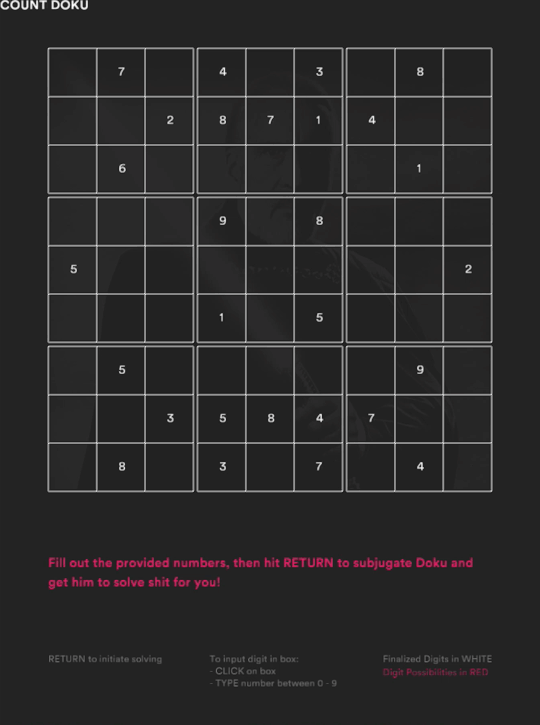
Count Doku: Using the force to solve Sudoku
It was an uneventful evening in Berlin, so of course, solving some sudoku felt like the most appropriate way to spend my time :/ But then I ended up slipping into an obsessive ( and not very smart ) mental space that led me to spend 2 freaking hours trying to solve an apparently ‘evil’ sudoku puzzle. It really hurt. So I thought maybe I could try and write some code that solves these frustrating puzzles and in the process, help me get over my evening of failure.
This little beginning turned into a very fun few days, wherein, I played, I stressed, I wrote code (the kind that a developer wouldn’t take kindly to), but hey! it does the job (with minimal human input). This is one of the most pointless self initiated projects I have done in recent times, but then again, I learnt a bunch more about working with object classes, embedded loops, math, logic, debugging etc etc. I’d like to believe that occasional deep dives into code, are bound to expand my experience and skills as a interaction designer.
All the code is written in Processing and it’s all on GitHub. If the futility of this endeavor holds you back from checking it out, know that, I have forced in some Star Wars puns as well. Maybe those would help?
0 notes
Video
instagram
Count Doku: Under Construction
Time has been plenty lately, so thought I'd feed the geek. Learn a bit. Count Doku is a Sudoku Solver built on Processing. Yes, an auto-solver goes totally against the point of sudoku but hey, the ridiculousness of it was half the fun! :D
I'l post more about this very fun endevour, very soon!
1 note
·
View note
Video
vimeo
OcTilt: Gestural Synthesizer
As part of a 2 week introduction to digital fabrication, I hacked into a gamepad and built this chap. It's a tilt-based controller for patatap, though it could be easily adapted to work with any other digital synthesizer.
It has 8 tilt-able directions for input, and a 'melody switch' that allows one to switch between the various melody groups that are available on the patatap synth. From the point of view of scalability & adaptability— 8 inputs made sense, because of the octave situation in music theory— and a 'melody switcher' could be conveniently turned into a 'scale switcher'
So, thats OcTilt. Making it was an emotional rollercoaster. Lazer cutting, 3D printing & DIY switches being the high points; trying to solder on aluminium foil being the low. Mustn't do that kind of stuff.
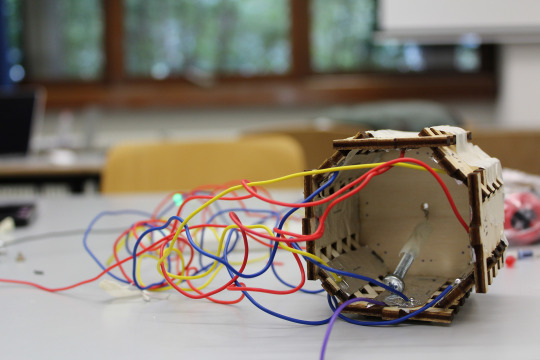


#digital fabrication#hack#gamepad#patatap#interface#tilt#lazer cut#3d printing#synthesizer#controller
1 note
·
View note
Video
vimeo
Collision: A Virtuo-Physical Car Game
Collision was the result of a 1 week workshop focussed on exploring ‘atoms & pixels’ and their relation to each other. It’s a table-top car game in which, pixels collide with atoms, and atoms with pixels. All kinds of amusements occur.
Before arriving at this outcome, we mostly played around with processing, projectors & several objects in our vicinity ( with no specific goal in mind ). When it eventually started looking like a messy arcade game arena, we made a few tweaks, threw in a couple of game pads, and bam. COLLISION was born.

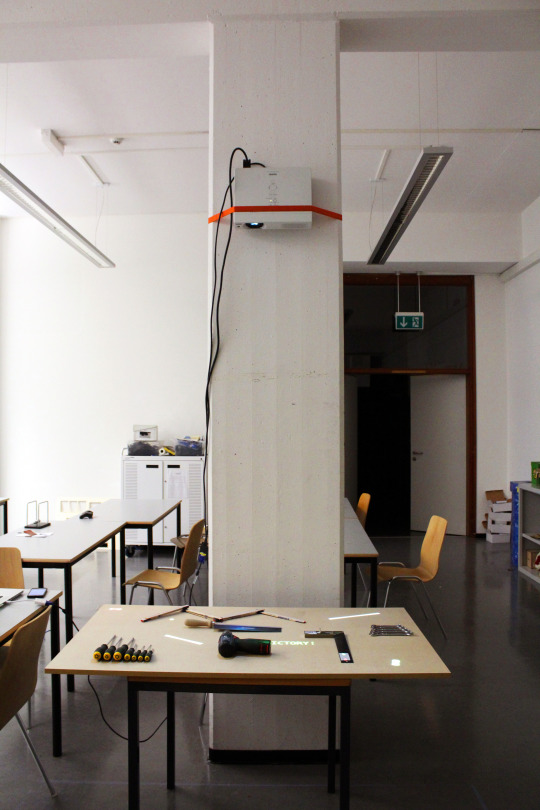
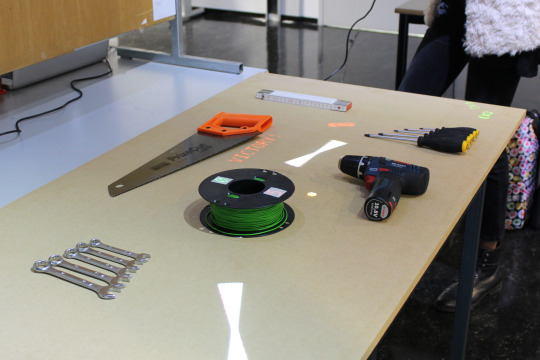
created in collaboration with Julien Courbat
0 notes
Video
vimeo
Glog: A Chit-Chat Visualizer
Glog is a data-visualising glass. It tracks and records 3 key variables during a night out at a pub:
No. of drinks consumed
No. of people spoken to
And the length of these conversations
Drinking is fun. Drinking at pubs in funner. Drinking + chatting (about irrelevant, inconsequential nothings) is funnest. What if our intoxications & conversations at a night out could be visualised onto our glass? Could it enhance a pub’s spatial experience? Could it tickle a pub-goer’s amusement? Since amusement is probably one of the main motivations to visit a social drinking space. Would be quite fun to be surrounded by folks who are hanging around with bright, animated glasses, that represent how ‘happening’ their night has been. Not sure how fun it would be for someone who is having a miserable night, but well, why not explore this idea.
For the visualisations, processing & projections were the tools we used to explore different routes.

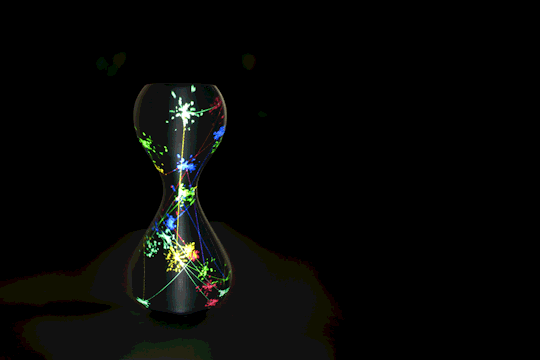
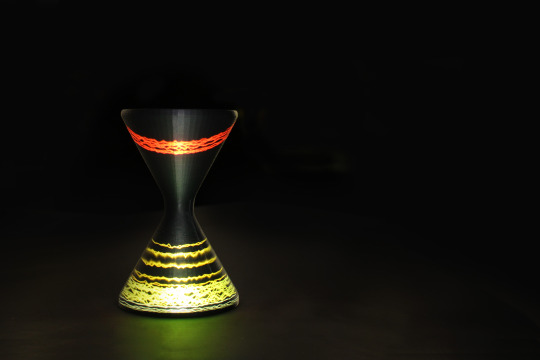
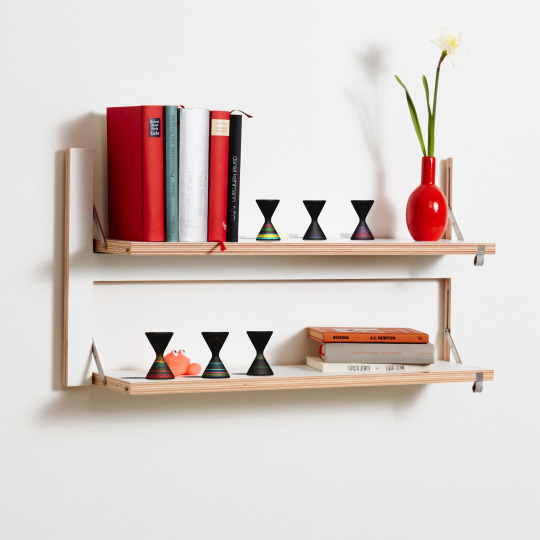
PRINTED MINIATURES AS SOUVENIRS
created in collaboration with:
Aris Dotti, Asanka Whitanaarachchi & Snigdha Nanduri.
0 notes
Video
instagram
Glog: Vine Prototype
This was a super fun exercise! We made a quick fire, video prototype to get some clarity & direction with our concept of an ‘interactive glass’. Though the idea transformed significantly after this, was a useful exercise to validate (or not) concepts.
1 note
·
View note
Video
vimeo
DreamHub: Sleep Cycle Visualizer
This ‘smart’ lamp, (because you know, everything is smart these days) tracks your sleep quality and transforms that data into beautiful light patterns, to illuminate your morning. It's more about beauty & patterns, and less about data & insights.
When morning comes, and your annoying alarm starts ringing, DreamHub comes to life, to welcome you into another day of abundant joy & happiness. Or misery and suffering. Doesn’t matter. The point is, this ‘digital dreamcatcher’ helps to create an atmosphere of good vibes, to ease you into the day ahead. And also to give you a quick overview of how amazing (or horrible) your sleep has been.



created in collaboration with:
Alessandra Angelucci & Julien Courbat
0 notes
Video
instagram
Moment Of Truth
Our first look at the effect created by 100 LEDS below a patterned stencil, below translucent acrylic.
Such joy.
0 notes
Text
Tra(gg)ic: How Did London Fix its Congestion Problem?
Tra(gg)ic is a data visualization analysing the change in traffic trends from 2000 to 2014 in the central boroughs of London.
In 2003 London introduced ‘congestion charge (CC)’– a daily tax for anyone who wants to drive in central London. Why? To improve traffic flow (of course), reduce pollution, and generate revenues for transport & road safety development. Tra(gg)ic analyses the effects of this charge on the daily flow of cars, bikes & buses inside as well as outside the CC zone. I wanted to find patterns and understand how such policies affect urban mobility.
This project was created as part of the ‘data visualisation’ course— which focussed on data mining, analysis, visualisation, and some technical tidbits about d3.js.
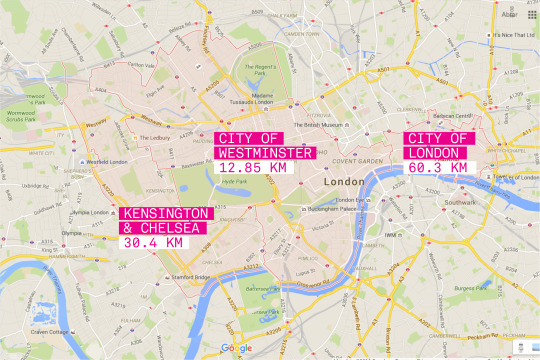
THE CC ZONE

AREA OF ANALYSIS


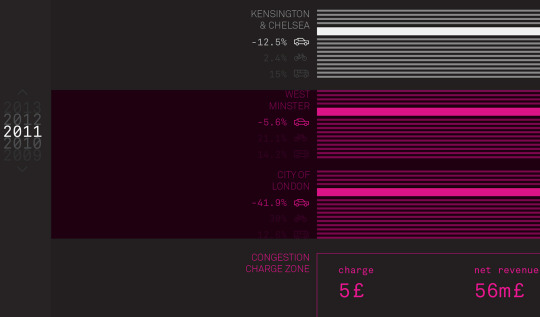
FINAL OUTCOME
So did CC work? Would something like this help a place like Bombay? Ummm... I think the problem here might be a bit more complex than that. But that's a discussion for another time. So I shall conclude with some of the insights I got through this project:
The congestion charge seemed to have helped in the inner city. It helped free up space for reallocation.
The revenues generated were invested in improvement of bus & cycle mobility, which further contributed to reduction of congestion.
However, reduction in traffic even before the CC & in non-CC areas suggests that, other factors may also be responsible, such as recession, higher fuel prices, improved bus & cycle mobility.
IMPROVING THE MOBIITY OF A CITY DEPENDS OF A NUMBER OF FACTORS WHICH ARE ALL CO-DEPENDENT
1 note
·
View note